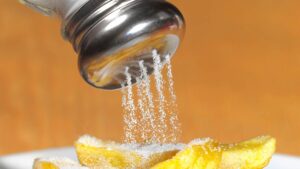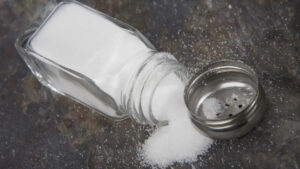Extreme Makeover: Can a facelift give WA’s potash scene another life?

Pic: Getty Images
- WA Potash is back in the picture after Czech billionaire Pavel Tykac’s Sev.en Global Investments produced on spec sulphate of potash last month at the Lake Way project
- Enthusiasm for the sector was shot by a string of company collapses, including the Salt Lake Potash business acquired by distressed asset hunter Sev.en
- But some industry players remain sceptical, with Reward Minerals boss Lorry Hughes saying SoP’s best prospects will be found closer to the coast
Three years after a false dawn sent Australia’s nascent potash sector to the wall, moves are afoot to revive an industry which left a slew of ivory white elephants across the Australian countryside.
But the question remains, were the industry’s first movers merely undercapitalised, or were their projects technically flawed?
Not all leaders of what is left of the WA sulphate of potash scene are aligned here.
The miner with the most skin in the game, albeit grafted from a far bigger body, is the private equity vehicle of Czech billionaire Pavel Tykac.
His company Sev.en Global Investments has spent about $200 million to produce its first industry standard 53% K2O grade sulphate of potash from the Lake Way brine operation near Wiluna in central WA, a milestone announced last month. Before doing so it picked apart the carcass of Salt Lake Potash, which went bust shortly after opening leaving investors including the Federal Government’s Clean Energy Finance Corporation in the lurch.
Sev.en has left the process largely intact. But it’s brought deep pockets and experience in turning around distressed assets to the project.
Mostly focused on coal mines and power plants, energy assets starved of capital for ESG reasons, the Salt Lake Potash purchase from administrators KordaMentha was a different kind of buy.
Sev.en Australian country manager Mark Sykes said the Czech investor has changed out elements at Lake Way, including moving from Jameson to Denver flotation cells in its plant.
But much of its investment logic was having the deep pockets required to invest in a capital intensive and financially precarious industry, where you need the balance sheet to withstand a 13-month wait from depositing brines to harvesting the salt for processing.
“We’ve had ownership since around October 2022… and it’s been roughly about $2-2.5 million dollars a week to fund it,” Sykes told Stockhead.
“So it gives you (an idea of) the quantum of the investment that we’ve had to put in.
“That’s been the conviction and the commitment that the family has put behind this and then also the commitment and the conviction of our workforce to actually consider what was in place may not be optimal, and to be open to change the direction that they were going in and be able to deliver this result.”
Technology challenge
Lake Way was emblematic of the projects developed in the first wave of the SoP sector in WA – large inland brines, extracting high-quality potash through evaporation.
The theory goes that this would place the operators lower on the cost curve and with ESG benefits than incumbent producers in Europe using the Mannheim Process to convert lower class muriate of potash to sulphate of potash, a higher quality fertiliser used to grow shallow rooted crops sensitive to root burn like avocados and macadamias.
That process requires the purchase of MoP on market or via offtakes as an input cost before using gas or oil-fuelled kilns to bake the fertiliser.
Australia’s ‘natural’ SoP was thought therefore to provide both cost and environmental advantages. But the complexity of opening up these resources inland, far from existing infrastructure and via untested methods proved too challenging three years ago.
As well as SO4, Kalium Lakes went under after trying to start up its Beyondie project, Mark Creasy-backed Australian Potash (ASX:APC) relinquished its Lake Wells project tenements and is now recapitalised exploring for metals in the hot West Arunta district and Trigg Mining (ASX:TMG) has gone on the hunt for other metals, landing on a gold-silver asset in Queensland.
Hangin’ in there
There are three legacy companies still in the potash game in various forms. $71 million-capped Agrimin (ASX:AMN), owner of Lake Mackay in the West Arunta region, which is down 63% in the past five year, is still primarily an SoP developer.
BCI Minerals (ASX:BCI) is building its $1.6bn Mardie project in the Pilbara, though the project is more of a solar salt asset in the vein of Rio Tinto’s Dampier Salt business, with SoP a by-product.
Also going the coastal route is Dr Michael Ruane-backed Reward Minerals (ASX:RWD), which elected to relinquish its remote KP Potash project last month and focus on its recently acquired Carnarvon potash project on the Gascoyne coast.
RWD tried to acquire Beyondie for around $15m up front, CEO Lorry Hughes told Stockhead, but it is largely the plant infrastructure Reward likes there.
“We couldn’t get that deal over the line, we weren’t able to secure enough funding,” Hughes said.
“You’ve got to remember that with the failures of SO4 and Kalium Lakes, that’s essentially wiped out all institutional support for potash in Western Australia, so there’s a very limited pool of funding for that deal.”
Agrimin pulled out of a similar process. Hughes believes future potash successes will need to be closer to existing infrastructure to avoid operating and capital cost blowouts.
“We were thinking about taking the plant to Carnarvon, because a lot of the cost structures around potash are based on logistics as well. You want to be able to produce the potash cheaply and get it to market as cheaply as you can,” Hughes said.
“The KP project has been held by Reward for the majority of 15 years. It was our lead project where we did a lot of test work, we spent a lot of money – well over $20 million spent on that project.
“But we’ve realised that since we’ve done our scoping study for Carnarvon and developed (our) new technology, there’s only one place we want to be, and that’s on the coast next door to a salt operation. That’s the most economic place for Western Australian potash to start, and the logistics for the KP project just didn’t cut it for us.”
Intriguingly, a 60% gain for RWD led it into our top 50 resources gainers for July, a rare feat for a company in the out-of-favour potash sector.
Scepticism abounds
Hughes, who before a stint in the gold industry was at the helm of African potash explorer Danakali (ASX:DNK) (DNK realised some return for investors by selling its 50% stake in the Colluli project in Eritrea last year) says it would be great for the potash industry if the deep pockets of Pavel Tykac were to demonstrate the possibility of making cash out of Aussie SoP.
But he remains sceptical they will get there in their current form, with no timeline yet on Lake Way’s ramp-up to nameplate production rates of 200,000tpa.
“If they can come out and have steady state production that’s economical, definitely that will change the industry. But I do have my doubts,” he said.
News Lake Way had become a producer was closely followed by the revelation Sev.en had opened a process to selldown at least part of the package of assets acquired from Salt Lake Potash, and potentially all of it should an attractive enough offer hit the table.
“At this stage, when the project has proven the functionality of the production process, we believe the entry of a strategic investor could prove valuable in facilitating the project’s further development and the establishment of SO4 as a strong player in the market for organic fertilisers,” Sykes said.
On the flipside Sev.en is not looking externally at other distressed assets yet.
He was hopeful other producers came to market to build the talent pool in the industry, with the focus at Salt Lake to hit steady state production and satisfy the demands of future offtakers.
“I think the stronger the industry, the better for us, and we would like to think that we collaborate in various ways with other players, and each asset will have its own challenges and its own uniqueness,” he said.
“But hopefully people will be reinvigorated that there is the capacity and the capability of actually producing potash at spec in Australia.”
Where Sykes and Hughes both find common ground is in the value of an Aussie made SoP product to farmers, should they prove successful.
“Certainly by virtue of the news that we are actually capable of producing product from our pond network, inbound interest, I think is an indication that there is strong interest for this product,” Sykes said.
“SoP is a premium fertiliser. If it was readily available around the world, there would be a hell of a lot more use of that fertiliser, particularly in places like Australia,” Hughes said.
“We’ve got farmers in our family, they buy SoP, they’re always complaining about the price. It’s a very expensive farm input because of the low chloride nature of it, which is particularly relevant with certain crops in low rainfall areas.
“So we believe the fundamentals of SoP are going to continue to improve and whatever we can make, we’ll be able to sell.”
Related Topics
UNLOCK INSIGHTS
Discover the untold stories of emerging ASX stocks.
Daily news and expert analysis, it's free to subscribe.
By proceeding, you confirm you understand that we handle personal information in accordance with our Privacy Policy.








